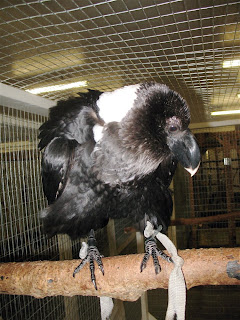These fabulous pictures were taken by Gay Schroer at the beautiful butterfly house in Chesterfield, Missouri. To learn more about the butterfly house, visit www.butterflyhouse.org








The World Bird Sanctuary’s mission is to preserve the earth’s biological diversity and to secure the future of threatened bird species in their natural environments. We work to fulfill that mission through education, captive breeding, field studies and rehabilitation.








 Campers meet Trevor, our Eurasian Eagle Owl, and help demonstrate how humans can move their eyes, while owls must move their entire head to spot prey or a threat.
Campers meet Trevor, our Eurasian Eagle Owl, and help demonstrate how humans can move their eyes, while owls must move their entire head to spot prey or a threat. Campers meet Shakespeare, our Barred Owl, and learn to recognize the "hoot" of the Barred Owl, one of Missouri's most common owls
Campers meet Shakespeare, our Barred Owl, and learn to recognize the "hoot" of the Barred Owl, one of Missouri's most common owls Campers meet Twig, our Eastern Screech Owl, and learn why he wouldn't make a good pet even though he's VERY cute.
Campers meet Twig, our Eastern Screech Owl, and learn why he wouldn't make a good pet even though he's VERY cute. Children meet Goblin, our Common Barn Owl. Don't let the name fool you--Barn Owls in Missouri are seldom seen and very threatened. The children learn all about what is threatening this beautiful species.
Children meet Goblin, our Common Barn Owl. Don't let the name fool you--Barn Owls in Missouri are seldom seen and very threatened. The children learn all about what is threatening this beautiful species. The children get to examine an owl wing up close and personal
The children get to examine an owl wing up close and personal











 Twig's Story
Twig's Story
The World Bird Sanctuary's Field Studies Staff are dedicated individuals with biology, wildlife management or related degrees. Each individual is well educated in the visual and auditory identification of avian species in the field.
WBS' Three Phase Program to Wildlife Area Enhancement:
Habitat Assessment: The first step of any project generally includes the evaluation of the property in question.
WBS field staff are able to provide an overall assessment of biodiversity, habitat quality, critical habitat identification and the presence or absence of federally or state identified endangered or threatened species as well as species of special concern.
Conservation Consultation: After a thorough assessment of the property has been completed, senior WBS field staff will develop various comprehensive habitat management plans taking into account the current and proposed land use. The identification of habitat restoration and/or enhancement opportunities can be made at this time.
Habitat Management: WBS is experienced in the development of long term habitat management programs designed to maintain an increased overall habitat quality. Based on goals and objectives developed during consultations, a detailed management plan can be put together including design, construction oversight and long term monitoring and maintenance regimes. When properly implemented, such a plan is integral to the success of any project and may bring other benefits such as increased aesthetic value and potential reductions in maintenance costs.
WBS is internationally recognized as a first-class conservation organization and has consulted on many projects for zoological institutions including international entities such as the Ecuador Zoological Park and the Guyana Zoological Park. WBS' environmental consultants have experience working with numerous government organizations including the U.S. Fish & Wildlife Service, U.S. Army Corps of Engineers, Missouri Department of Conservation, Missouri Department of Natural Resources, United States Air Force, Conservation on International Trade in Endangered Species (CITES) and many others.